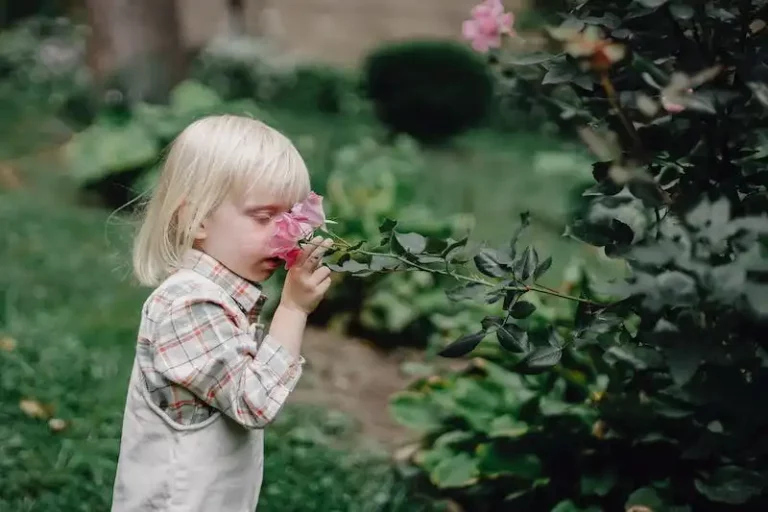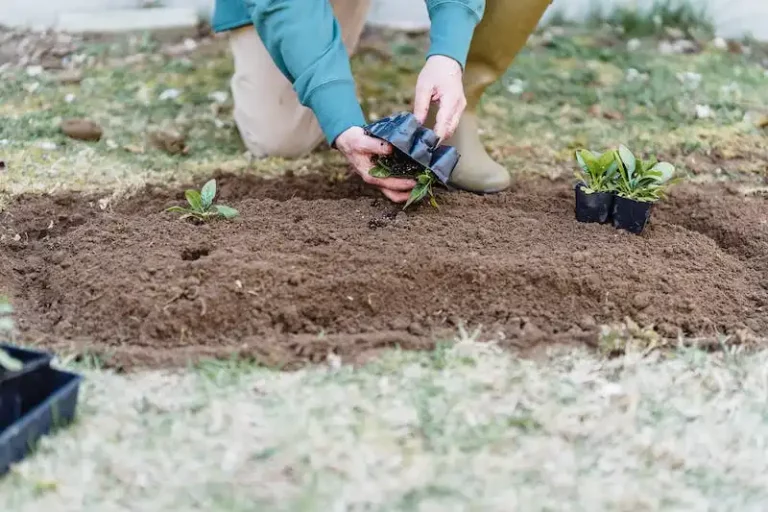Plumeria, also known as frangipani, is a tropical tree that is famous for its beautiful and fragrant flowers. Native to Mexico, Central America, and the Caribbean, plumeria has become a popular plant among gardeners worldwide. It is easy to grow, and its stunning blooms can add a touch of exotic beauty to any garden or landscape.
Plumeria grows best in warm climates, such as those found in Florida or the Caribbean. According to UF/IFAS (University of Florida/Institute of Food and Agricultural Sciences), plumeria thrives in USDA hardiness zones 10 and 11. It is a deciduous plant that goes through a dormant cycle in winter, during which it sheds its leaves and stops growing.
Plumerias prefer a combination of full sun and moderate humidity. They need at least 6 hours of direct sunlight each day to flower properly. It is also important to provide them with well-draining soil to prevent waterlogged roots, as plumerias are susceptible to root rot and other fungal infections. Water the plant deeply, but infrequently, allowing the soil to dry out between waterings.
Plumeria is relatively low-maintenance but may encounter some pests and diseases. Common pests include whiteflies and spider mites, which can be controlled with insecticidal soaps or other natural solutions. Fungus diseases, such as black tip fungus, can be prevented by avoiding overhead watering and removing infected leaves or branches.
Plumerias are typically propagated from cuttings or grown from seeds. Cuttings are the most popular method for propagating plumerias, as they maintain the characteristics of the parent plant. Seeds, on the other hand, can produce a variety of different colors and blooming patterns. Plant the cuttings or seeds in well-draining soil and provide them with a warm, sheltered location.
To ensure optimal growth and blooming, plumerias may benefit from fertilizing. Use a bloom-boosting fertilizer specifically designed for tropical plants, and apply it according to the package instructions. Some gardeners also use bloom-boosting oils to enhance flower production.
With its vibrant blooms and tropical beauty, plumeria is a popular choice for gardeners worldwide. Whether grown in containers or outdoors, plumerias add a touch of exotic elegance to any landscape. With the right care and attention, anyone can enjoy the beauty of plumerias in their own garden.
Sources: UF/IFAS (University of Florida/Institute of Food and Agricultural Sciences)
How to Grow Plumerias in Pots
Plumerias are beautiful, tropical plants that can be easily grown in pots. By following a few simple steps, you can enjoy these gorgeous flowers right in your own backyard or on your balcony. Here are some tips for successfully growing plumerias in pots:
| 1 | Choose the right pot: |
| Use a pot that is at least 12 inches in diameter to allow enough room for the plumeria’s root system. Make sure the pot has drainage holes to prevent waterlogging. | |
| 2 | Use well-draining soil: |
| Plumerias prefer soil that is well-draining and slightly acidic. You can use a mix of regular potting soil and perlite or sand to improve drainage. | |
| 3 | Plant your plumeria: |
| Carefully plant your plumeria in the pot, making sure that the roots are spread out. Fill the pot with soil and gently press it down around the plant. | |
| 4 | Water your plumeria: |
| Water your plumeria thoroughly after planting and then water it only when the top inch of soil feels dry. Overwatering can cause root rot, so make sure to let the soil dry out between waterings. | |
| 5 | Provide adequate light: |
| Plumerias need full sun to thrive, so place your potted plant in a sunny spot. If you live in a colder climate, you can bring your plumeria indoors during the winter months and provide it with artificial light. | |
| 6 | Fertilize regularly: |
| Use a bloom-boosting fertilizer that is high in phosphorus to encourage flower growth. Follow the package instructions for proper dosage and frequency. | |
| 7 | Prevent pests and diseases: |
| Keep an eye out for pests like mites and aphids. If you notice any signs of infestation, treat the plant with an appropriate pesticide or insecticidal soap. Also, make sure to prevent fungal infections by avoiding overhead watering and applying a fungicide if necessary. | |
| 8 | Prune and shape your plumeria: |
| To promote branching and a more bushy appearance, prune your plumeria in early spring before new growth begins. Use clean pruning shears to remove any dead or damaged branches. | |
| 9 | Move the plant indoors for winter: |
| If you live in an area where temperatures drop below freezing, it is best to move your plumeria indoors for the winter. Place it in a cool, dry location with bright, indirect light. Reduce watering and stop fertilizing during the winter months. | |
| 10 | Enjoy the beautiful blooms: |
| With proper care and attention, your plumeria should produce stunning flowers in a variety of colors. Sit back, relax, and enjoy the beauty and fragrance of your plumeria plant! |
By following these tips, you’ll be able to grow plumerias in pots with ease. Whether you’re a seasoned gardener or a beginner, these tropical beauties will surely brighten up your outdoor space and bring a touch of exotic charm.
Plumerias indoors vs outdoors
Growing plumerias indoors or outdoors depends on various factors such as hardiness, maintenance, and desired flowering characteristics. Plumerias are tropicals native to the islands of Hawaii and are known for their beautiful star-shaped flowers and fragrance.
When grown indoors, plumerias require a little more attention and care compared to their outdoor counterparts. They thrive in containers with well-draining soil and should be placed near a sunny window or under grow lights for maximum sunlight exposure. Indoor plumerias are more susceptible to pests like whiteflies and spider mites, and occasional inspection and pest control measures are necessary to prevent any harmful infection.
On the other hand, when grown outdoors, plumerias have more room to spread their branches and flourish. They can grow in the ground or large containers, but it’s important to note that plumerias prefer well-draining soil to avoid root damage caused by excessive moisture. Plumerias are also sensitive to frost, so they should be protected or brought indoors during colder seasons, especially in areas where frost occurs.
Outdoor plumerias benefit from natural sunlight, wind, and rain, which contribute to their overall growth and flowering. They can achieve better hardiness and branching characteristics when exposed to the elements. However, they may be susceptible to leaf spot disease caused by fungal spores, so regular inspection and treatment with fungicides may be necessary to maintain their health.
Regardless of whether they’re grown indoors or outdoors, plumerias require regular watering and fertilizing to ensure healthy growth and flowering. They thrive in a well-balanced fertilizer with a higher phosphorous content, such as a 10-30-10 formula, to promote flower production.
Ultimately, the decision to grow plumerias indoors or outdoors depends on individual preferences and environmental factors. Both options have their own advantages and challenges. Indoor plumerias can be enjoyed year-round and are easier to care for, while outdoor plumerias can grow larger and produce more flowers.
Please note that plumerias, specifically the sap, leaves, and branches, are toxic if ingested and can cause skin irritation. When handling plumerias or propagating them, it’s recommended to wear gloves or protective sleeves. If you have pets, keep them away from these plants to prevent any harm or toxicity.
No matter where you choose to grow your plumerias, they are sure to add a touch of tropical beauty and fragrance to your garden or indoor space.
Size of Plumerias in containers
Plumerias, also known as Frangipani, are wonderful tropical plants that are often grown in containers. Growing plumerias in containers allows gardeners in colder climates to enjoy their beauty and fragrance year-round. Plumerias come in a variety of sizes, from tiny flowering plants to large, sturdy trees.
The size of a plumeria plant in a container depends on several factors, including the variety of plumeria, the size of the container, and the climate in which it is grown. Plumerias can grow to be quite large, with some varieties reaching heights of 30 feet or more when planted in the ground. However, when grown in containers, plumerias typically stay more compact.
Plumerias can be grown in containers as small as 4 inches in depth, but larger containers are recommended for better root development and stability. A container that is at least 12 inches deep and wide is ideal for most plumeria varieties. The container should also have drainage holes to prevent waterlogging, as plumerias are susceptible to root rot if their roots sit in water for too long.
| Container Size | Approximate Plant Size |
|---|---|
| 12 inches | Tiny or young plumerias |
| 24 inches | Moderate-sized plumerias |
| 36 inches or larger | Large, mature plumerias |
Plumerias thrive in a well-draining potting mix that allows excess water to freely drain away. A mix of equal parts potting soil, perlite, and coarse sand is a good option. Plumerias should be watered thoroughly, allowing the soil to dry out slightly between waterings. The watering frequency will vary depending on the climate and humidity level in which you live, so it’s essential to monitor the moisture level of the soil.
In colder climates, plumerias can be brought inside during the winter months to protect them from freezing temperatures. They should be placed in a bright location, such as near a south-facing window, to receive adequate light. Reduce watering during this time, as the plant’s growth slows down in the cooler months.
Plumerias are generally low-maintenance plants, but they can occasionally be susceptible to diseases such as rust or black spot. These diseases can be prevented by applying a fungicide spray, such as neem oil, to the leaves and stems of the plant. Pests, such as aphids or mealybugs, can also be a problem. Regularly inspect the plant for any signs of pests and take appropriate actions to control them.
Plumerias are tropical plants native to Central America, Mexico, and the Caribbean islands. They are well-adapted to warm and humid climates and thrive in locations where the temperature remains above 50°F (10°C) year-round. However, plumerias can also be grown in colder climates with proper care and protection.
In conclusion, plumerias grown in containers can bring a touch of the tropics to any garden or outdoor space. With their fragrant flowers and beautiful appearance, they are sure to add a splash of color and charm. Whether you start with seeds or young plants, plumerias are relatively easy to grow and can reward you with gorgeous blooms year after year.
Sources:
- Gardening Know How: https://www.gardeningknowhow.com/ornamental/flowers/plumeria/growing-plumeria.htm
- Gabrielle’s Garden: https://gabriellesgarden.com/grow-plumerias


